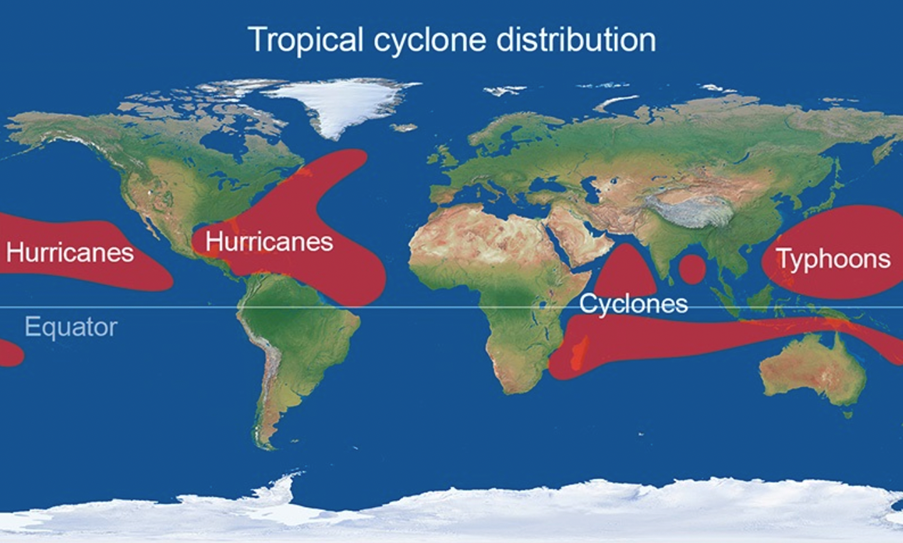What is the difference between a hurricane and a storm?
Weather of Arabia - Hurricanes and tropical storms are known as a region of low atmospheric pressure that arises over tropical waters and then moves to strike land loaded with strong winds and heavy precipitation, but how is it determined if the tropical situation is a storm or a hurricane? What is the difference between a hurricane and a storm?
Tropical storms and cyclones
Tropical storms and cyclones form through a condition known as tropical turbulence, which in turn appear over hot water when these conditions combine:
- The water surface temperature is above 26.6 degrees Celsius.
- Moisture saturated atmosphere.
- Tropical disturbance leads to high winds.
- Tropical turbulence develops as it draws its energy from the energy liberated from condensation of water vapor from the surface of warm waters.
What is the difference between a storm and a hurricane?
1. Wind speed
Tropical turbulence turns into a storm when wind speeds exceed 63 kilometers per hour. A tropical storm turns into a hurricane when wind speeds rise above 118 kilometers per hour.
2. Structural form
After the hurricane system begins to spin faster and faster, an eye-like shape forms in the center of the hurricane and the clouds become thicker, and the storm does not have an "eye" in its center.

2. Atmospheric pressure
The surface atmospheric pressure in the center of a hurricane is very low. The lowest pressure reading ever recorded for a tornado (Typhoon Tip, 1979) is 870 millibars (mb). Most hurricanes have an average pressure of 950 millibars, while storms have atmospheric pressure greater than 985 millibars, and the wind speed in a hurricane is directly related to the surface pressure of the storm.
tropical cyclone
A tropical cyclone is defined as a gusty wind that rotates in a closed vortex in a region of low atmospheric pressure accompanied by high winds, and arises over the Atlantic, Pacific or Indian Oceans between the Tropics of Cancer and Capricorn.
A tropical cyclone is called Hurricane when it forms in the Atlantic and eastern Pacific Oceans, Typhoon when it forms in the western Pacific Ocean, and cyclone when it forms in the Indian Ocean.

Tropical cyclones arise when warm water from the ocean evaporates and the steamy air rises, creating a low-pressure system that sucks air from the surrounding areas. This system grows and spins faster, absorbs more air and draws energy from seawater heated by the sun.
Tropical cyclones rotate north of the equator counterclockwise due to the Earth's rotation, and their direction reverses in the Southern Hemisphere. In the middle, a quiet "eye" of turbulence arises, as cold air sinks toward the extremely low pressure region below, surrounded by rising winds of warm air.
The higher the wind speed, the lower the air pressure in the center and the stronger and stronger the storm. These cyclones are characterized by a low pressure center and a large number of thunderstorms that lead to strong spinning winds, heavy rain and floods.
Tropical cyclones usually weaken when they make landfall because they are no longer nourished by evaporation from the warm sea, and retreat into a storm.
Read more: Why are hurricanes and storms named after people?
Arabia Weather App
Download the app to receive weather notifications and more..



